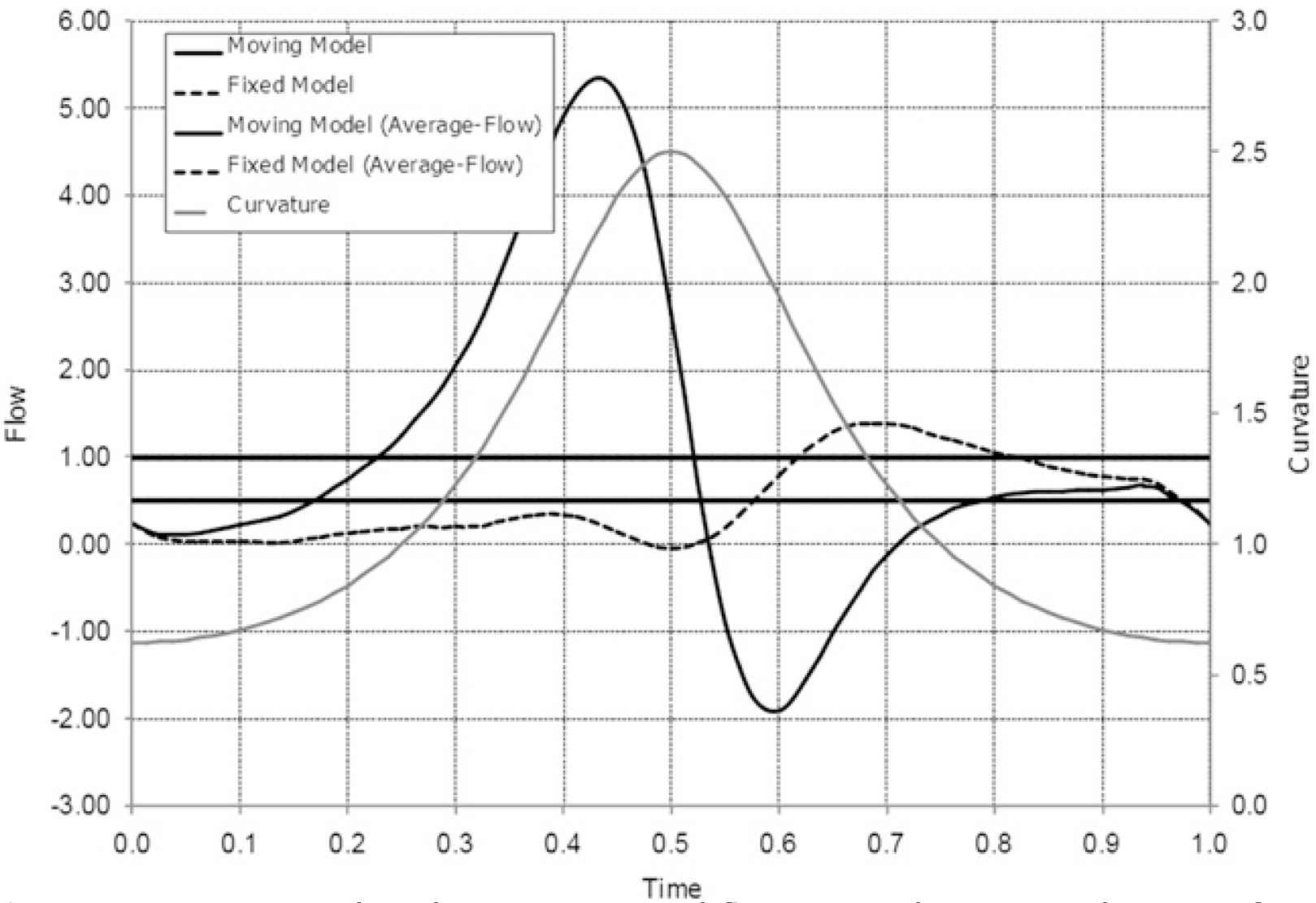P6.19 EFFECTS OF CARDIAC MOTION ON THE LEFT CORONARY ARTERY FLOW RATE
- DOI
- 10.1016/j.artres.2011.10.104How to use a DOI?
- Open Access
- This is an open access article distributed under the CC BY-NC license.
The aim of this work was to investigate the effects of physiologically idealized cardiac-induced motion on flow rate in human left coronary arteries. The blood flow rate were numerically simulated in a elastic modelled left anterior descending coronary artery (LAD) having a uniform circular cross section of 3.6 mm diam. Blood was considered to be a non-Newtonian fluid and Arterial motion was specified based on monoplane physiologically idealized bending. Simulations were carried out with dynamic pressure difference conditions between inlet and outlet in both fixed and moving LAD models, to evaluate the relative importance of LAD motion, flow rate, and the interaction between motion and time-averaged flow rate. LAD motion was caused variations in time-averaged flow rate magnitude about 30% of the fixed models. There was significant variability in the magnitude of this motion-induced flow variation. However, the magnification of time-averaged flow rate is depending to specification of the cardiac motion. Furthermore, the effects of pressure pulsatility dominated LAD motion induced effects; specifically, there were local flow variation and secondary flow in the simulations conducted in moving LAD models. LAD motion has big effect on time-averaged flow rate and secondary flow. Therefore, the hemodynamic effects of LAD motion can not to be ignored as a first approximation in modelling studies.

Temporal and time-averaged flow at 11 diameters distance from the LAD inlet for both moving and fixed models.
Cite this article
TY - JOUR AU - A. Hashemifard AU - N. Fatouraee PY - 2011 DA - 2011/11/29 TI - P6.19 EFFECTS OF CARDIAC MOTION ON THE LEFT CORONARY ARTERY FLOW RATE JO - Artery Research SP - 177 EP - 177 VL - 5 IS - 4 SN - 1876-4401 UR - https://doi.org/10.1016/j.artres.2011.10.104 DO - 10.1016/j.artres.2011.10.104 ID - Hashemifard2011 ER -
